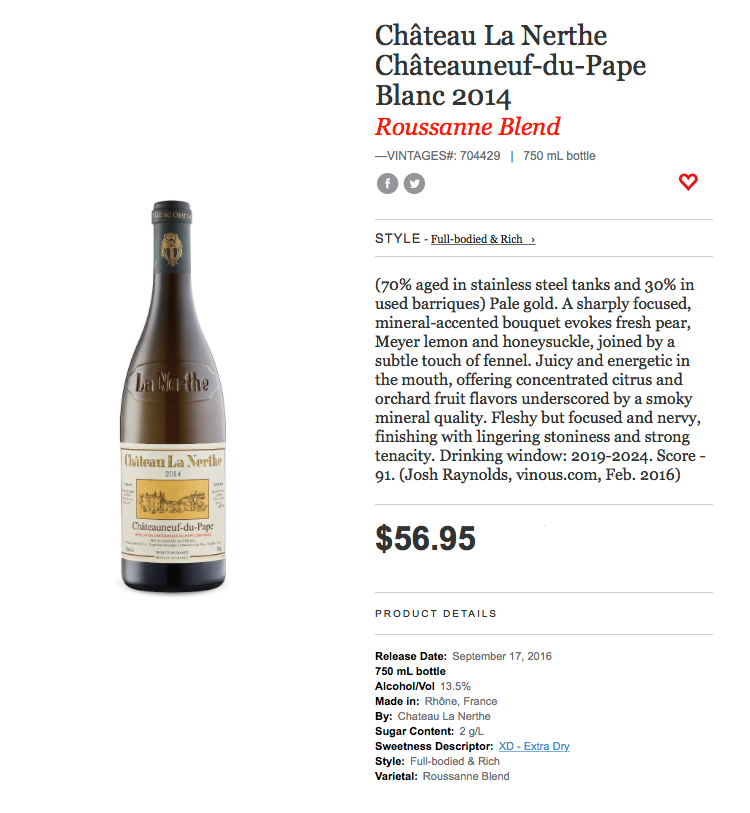Ask The Wine Ladies. Is there such a wine as a white Chateauneuf-du-Pape?

Chateauneuf-du-Pape
Dear The Wine Ladies,
A small group of us get together every couple of months for food and drink. Wine is increasingly becoming an important part of our socials. Last month we had a delicious red wine called Chateauneuf du Pape. Is it true that unique to this wine is that it has to be made with thirteen different kinds of grapes? Basically a Cab or Shiraz kind of guy I was just wondering if I heard this right and also if there might be a white Chateauneuf-du-Pape as well subject to the same regulation?
Stan, New York, New York

Ask The Wine Ladies- Please submit your questions to info@thewineladies.com
Dear Stan,
Delicious indeed, the wines of Chateauneuf-du-Pape definitely rank among some of our faves. Actually Stan, it is not obligatory to use all thirteen grape varieties when producing a Chateauneuf-du-Pape. Vintners have the option to use any of, and/or up to all thirteen specific varietals. Regulations were actually adjusted and up to eighteen varietals in the last few years.
How and when did the original regulations come about?
In 1923 the Baron Le Roy of Chateau Fortia, a vigneron of that time in Chateauneuf-du-Pape got together with the other growers and drew up a set of rules for the production of wines coming from this region.

Baron Le Roy Chateau Fortia
Actually the entire appellation system (Appellation d’Origine Contrôlée) in France as we know it today, was fashioned after this very set of regulations. Rules included dictating a minimum alcohol content. The first time in France, 12.5% the highest in France. Defining an area as permitted to be included in Chateauneuf-du-Pape. The Baron also included in the rules ten permissible grape varieties. In 1936 three additional grape varieties were added to the list bringing the total to thirteen. The most prominently used grape variety continues to be Grenache, with Mourvedre and Syrah (Shiraz as many know it) ranked second and third.
There is a white Chateauneuf-du-Pape produced, made of up to six white grape varieties. It is made only in very small quantities and not regularly available for purchase.
Chateauneuf-du-Pape, which translates to “new castle of the Pope”, is an historic village (as well as name of the appellation) between towns Avignon and Orange located in France’s southern Rhone. It is the best-known wine of the region and typically produces full bodied, powerful, juicy and complex red wines considered among the best of the Rhone Valley. The name dates back to the early 14th century when Avignon was chosen as the new home for the Pope’s court.
The Wine Ladies, Georgia and Susanne




